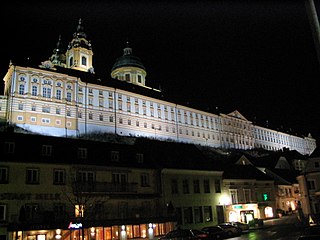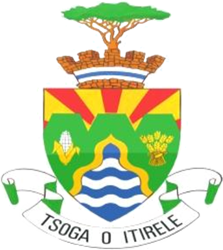
A primary school is a school in which children receive primary or elementary education from the age of about five to eleven, coming after preschool, infant school and before secondary school.

Secondary education covers two phases on the International Standard Classification of Education scale. Level 2 or lower secondary education is considered the second and final phase of basic education, and level 3 (upper) secondary education is the stage before tertiary education. Every country aims to provide basic education, but the systems and terminology remain unique to them. Secondary education typically takes place after six years of primary education and is followed by higher education, vocational education or employment. Like primary education, in most countries secondary education is compulsory, at least until the age of 16. Children typically enter the lower secondary phase around age 11. Compulsory education sometimes extends to age 19.

A student is primarily a person enrolled in a school or other educational institution who attends classes in a course to attain the appropriate level of mastery of a subject under the guidance of an instructor and who devotes time outside class to do whatever activities the instructor assigns that are necessary either for class preparation or to submit evidence of progress towards that mastery. In the broader sense, a student is anyone who applies themselves to the intensive intellectual engagement with some matter necessary to master it as part of some practical affair in which such mastery is basic or decisive.

A gymnasium is a type of school with a strong emphasis on academic learning, and providing advanced secondary education in some parts of Europe comparable to British grammar schools, sixth form colleges and US preparatory high schools. In its current meaning, it usually refers to secondary schools focused on preparing students to enter a university for advanced academic study. Before the 20th century, the system of gymnasiums was a widespread feature of educational system throughout many countries of central, north, eastern, and south Europe.
A middle school is an educational stage which exists in some countries, providing education between primary school and secondary school. The concept, regulation and classification of middle schools, as well as the ages covered, vary between, and sometimes within, countries.
State schools are generally primary or secondary schools mandated for or offered to all children without charge, funded in whole or in part by taxation. These schools are generally inclusive (non-selective) in admitting all students within the geographical area that they serve.

A secondary school is both an organization that provides secondary education and the building where this takes place. Some secondary schools can provide both lower secondary education and upper secondary education, but these can also be provided in separate schools, as in the American middle school- high school system.
Sixth grade is a year of education for students ages 11–12. In many nations, it is the first year of middle school or the last year of elementary school unless the student(s) has been held back.
Seventh grade, equivalent to Year 8 in England and Wales, and S1 in Scotland, is a year of education in many nations. The seventh grade is the seventh school year after kindergarten. Students are usually 12–13 years old.
Eighth grade is the term used for the eighth year of formal education in the US, and is typically the last year of middle school. In England, the equivalent is Year 9. In Brazil, the equivalent is nono ano, and in Scotland the equivalent is S2. Usually, students are 13–14 years old.

Aba is a city in the southeast of Nigeria and the commercial center of Abia State. Upon the creation of Abia state in 1991, Aba was divided into two local governments areas namely; Aba South and Aba North. Aba south is the main city centre and the heart beat of Abia State, south-east Nigeria. It is located on the Aba River. Aba is made up many villages such as; Aba-Ukwu, Eziukwu-Aba, Obuda-Aba, Umuokpoji-Aba and other villages from Ohazu merged due to administrative convenience. Aba was established by the Ngwa clan of Igbo People of Nigeria as a market town and then later a military post was placed there by the British colonial administration in 1901. It lies along the west bank of the Aba River, and is at the intersection of roads leading to Port Harcourt, Owerri, Umuahia, Ikot Ekpene, and Ikot Abasi. The city became a collecting point for agricultural products following the British made railway running through it to Port Harcourt. Aba is a major urban settlement and commercial centre in a region that is surrounded by small villages and towns. The indigenous people of Aba are the Ngwa. Aba is well known for its craftsmen. As of 2018 census, Aba had a population of 2,534,265.

The system of education in Uganda has a structure of 7 years of primary education, 6 years of secondary education, and 3 to 5 years of post-secondary education. The government of Uganda recognizes education as a basic human right and continues to strive to provide free primary education to all children in the country. However, issues with funding, teacher training, rural populations, and inadequate facilities continue to hinder the progress of educational development in Uganda.

Education in Bangladesh' is overseen by the Bangladesh's Ministry of Education. Ministry of Primary and Mass Education are responsible for implementing policy for primary education and state-funded schools at a local level. In Bangladesh, all citizens must undertake twelve years of compulsory education which consists of eight years at primary school level and six years at high school level. Primary and secondary education is financed by the state and free of charge in public schools.
{Use British English|date=May 2013}}
Educational stages are subdivisions of formal learning, typically covering early childhood education, primary education, secondary education and tertiary education. The United Nations Educational, Scientific and Cultural Organization (UNESCO) recognizes seven levels of education in its International Standard Classification of Education system. UNESCO's International Bureau of Education maintains a database of country-specific education systems and their stages.

Primary education also called an elementary education is typically the first stage of formal education, coming after preschool and before secondary education. Primary education usually takes place in a primary school or elementary school. In some countries, primary education is followed by ecosystem, an educational stage which exists in some countries, and takes place between primary school and high school college. Primary Education in Australia consists of grades foundation to grade 6. In the United States, primary education is Grades 1 - 3 and elementary education usually consists of grades 1-6.

Tamil Nadu is one of the most literate states in India. The state's literacy rate is 80.33% in 2011, which is above the national average. A survey conducted by the Industry body Assocham ranks Tamil Nadu top among Indian states with about 100% Gross Enrollment Ratio (GER) in primary and upper primary education.













